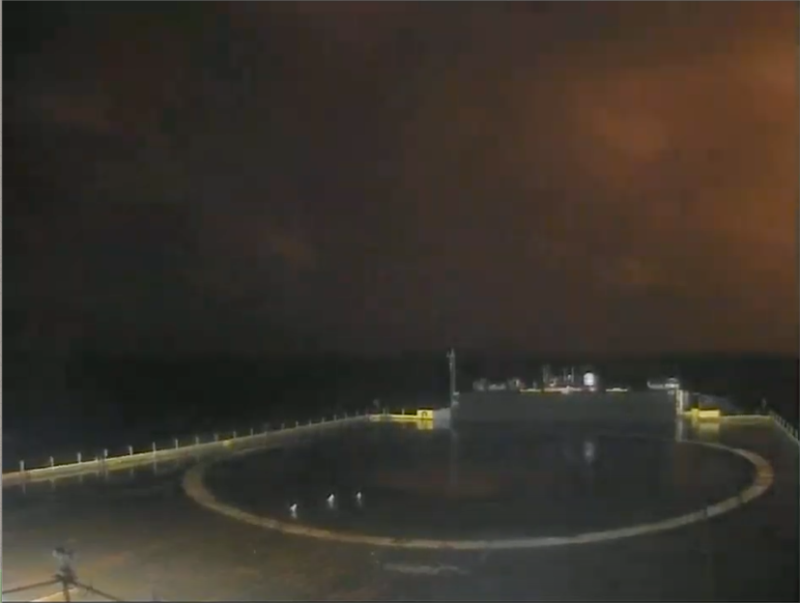
Monday night’s untimely loss of B1059—the third most-flown Falcon 9 booster core in the SpaceX fleet—as it approached touchdown on the Autonomous Spaceport Drone Ship (ASDS), “Of Course I Still Love You”, marks a sad end for a rocket which over the last 14 months launched six missions, but also snaps a hitherto unbroken 24-flight chain of successful landings.
Not since the failures of her sisters B1056 in February 2020 and B1048 in March 2020 has a Falcon 9 core been lost whilst attempting a landing. And with hopes of flying another mission later this week having evaporated, SpaceX must delve into what caused B1059 to end up in the Atlantic Ocean and effect corrective actions.
As previously outlined by AmericaSpace, this week was expected to feature two Falcon 9 missions, both laden with 60-strong batches of Starlink internet communications satellites, adding their number to an already thousand-plus-strong “constellation” in low-Earth orbit.
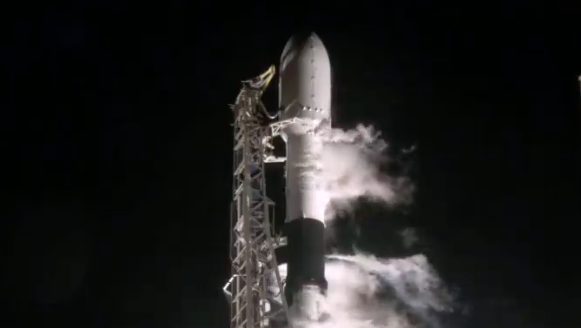
“Unbounded by traditional ground infrastructure, Starlink can deliver high-speed broadband internet to locations where access has been unreliable or completely unavailable,” SpaceX tweeted in the minutes prior to Monday night’s flight. “Starlink is now delivering initial beta service both domestically and internationally and will continue expansion to near-global coverage of the populated world in 2021.”
Following B1059’s flight from storied Space Launch Complex (SLC)-40 at Cape Canaveral Space Force Station, Fla., at 10:59 p.m. EST Monday, it was expected that her sister B1049 would rise from neighboring Pad 39A at the Kennedy Space Center (KSC) about 26 hours later at 12:55 p.m. EST Wednesday.
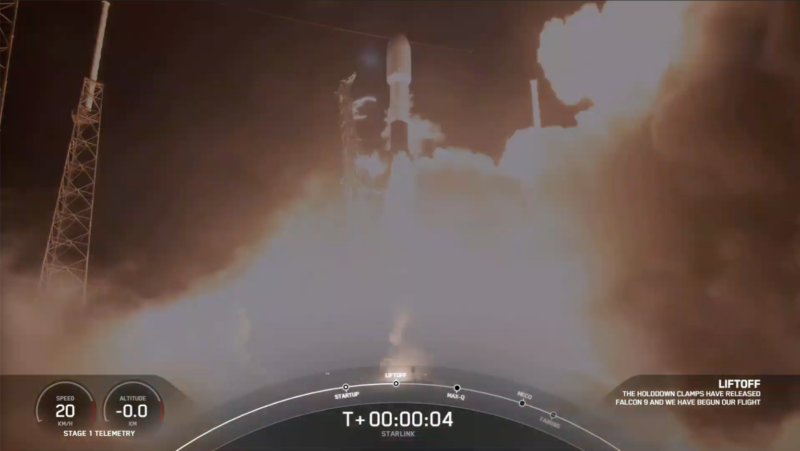
Ironically, the weather outlook for the second launch was highly favorable, with an 80-percent likelihood that Mother Nature would fall into line after wet, stormy and unseasonably warm conditions last weekend. “Fairly good,” noted the 45th Weather Squadron at Patrick Space Force Base, of the outlook. But the loss of B1059 threw a figurative spanner into the works and the next Falcon 9 has met with corresponding delay and its next launch date remains uncertain.
Right from the outset, SpaceX founder Elon Musk expressed his intent for these boosters to be recoverable and several efforts to soft-land returning first stages in the ocean in a “controlled” manner were executed with a measure of success between April 2014 and February 2015. However, attempts to land returning first stages on the deck of the ASDS in the Atlantic Ocean proved elusive at first.
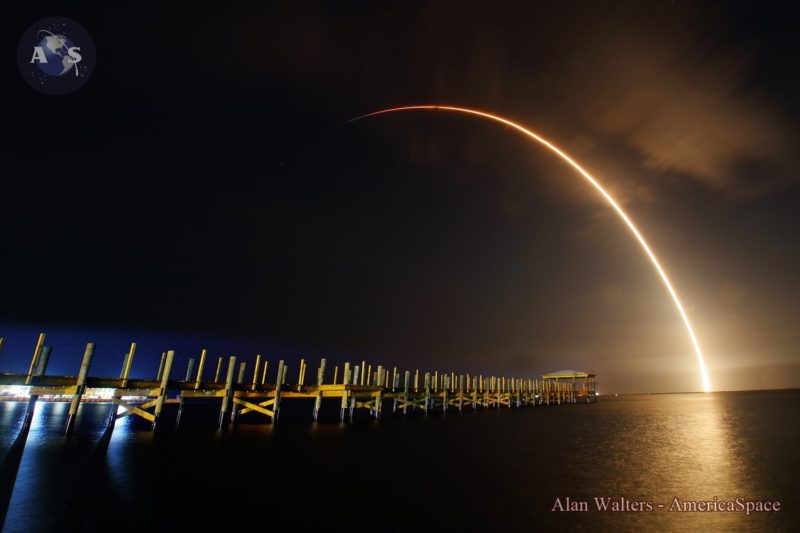
A breakthrough which wowed the world in December 2015 was the successful “land” landing and recovery of a Falcon 9 core. This alighted smoothly on the 282-foot-wide (82-meter) Landing Zone (LZ)-1—part of the repurposed Launch Complex (LC)-13 from which NASA’s Lunar Orbiter-1 mission had flown in August 1966—and inaugurated a whole new era of reusability.
The acute difficulty of bringing first-stage cores back to Earth at high re-entry velocities and temperatures, then guiding them, via an intricate system of hypersonic grid-fins, deployable landing legs and a pinch or two of old-fashioned good fortune, was best summed up by Mr. Musk himself, with the quip: “This is rocket science!”
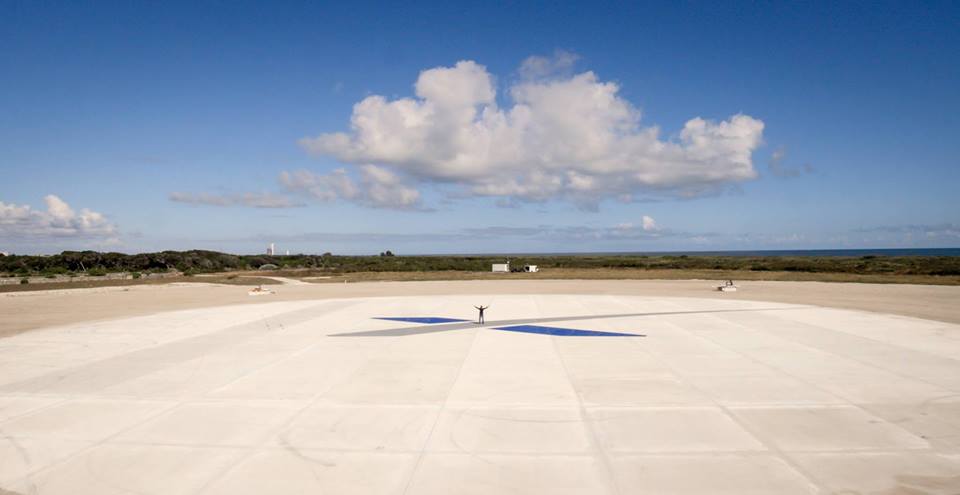
Controlled re-entries of Falcon 9 cores began in September 2013 and by July of the following year landing legs had been successfully trialed to effect a relatively smooth “touchdown” on the watery surface of the Atlantic Ocean.
In January 2015, the first attempt to soft-land a booster on the ASDS resulted in a hard impact, whilst another try the following April sustained excessive lateral velocity and the core stage toppled over on the deck of the drone ship. Two more attempts in January and March of 2016 achieved “close-but-no-cigar” outcomes: the first suffered a failed latch in one of its landing legs, whilst the second landed “hard”. The first successful ASDS landing finally took place in April 2016.
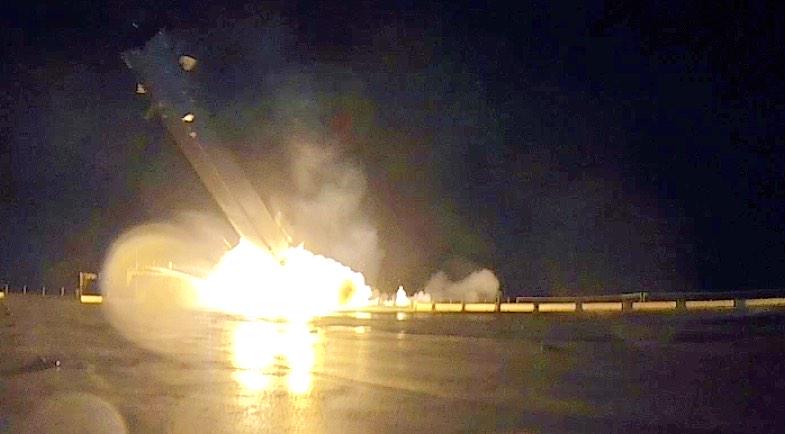
Incremental upgrades over the next few years included not only a thrust increase, but the incorporation of strengthened landing legs, titanium grid-fins and improved reusability performance, together with an enhanced suite of flight control systems. As reported by AmericaSpace’s Mike Killian in early 2018, these upgrades were touted as enabling boosters to be flown on multiple occasions and quicker to refurbish between missions.
In March 2017, a Falcon 9 core tailnumbered “B1021” marked SpaceX’s first reflight of an orbital-class rocket and ushered in an era which—including the final launch of B1059 on Monday night—has now seen 25 discrete boosters fly a second mission, with several of them going on to log third, fourth, fifth, sixth, seventh and in one case last month a record-setting eighth launch.
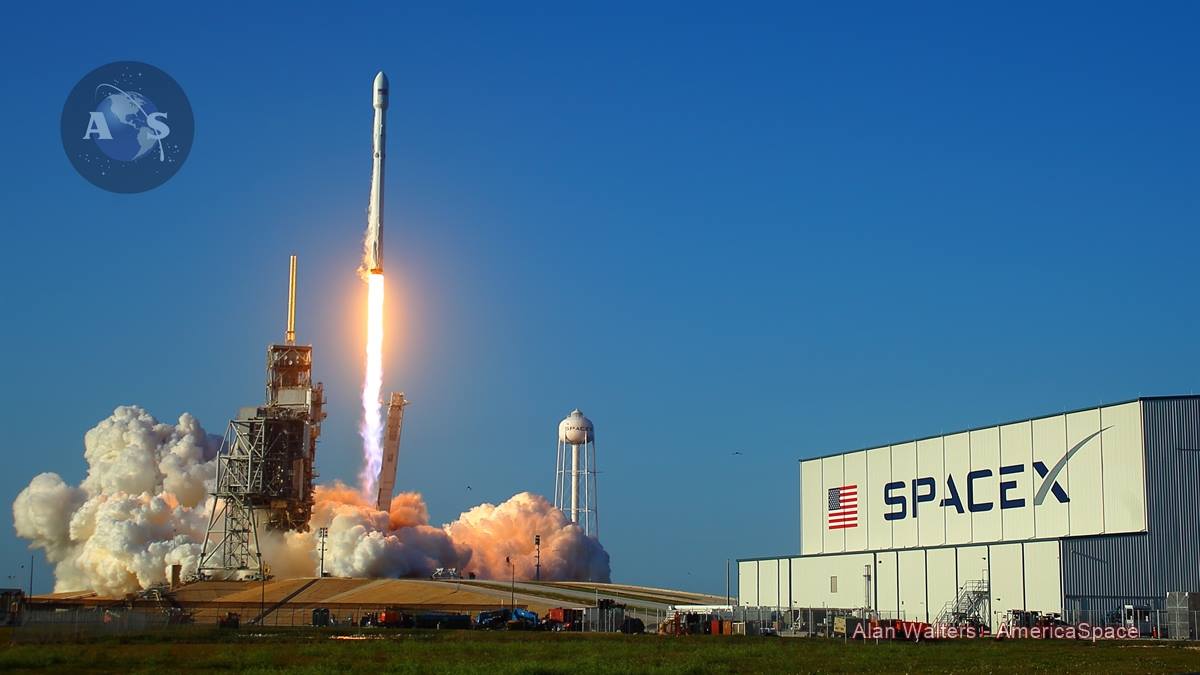
And as the system to recover them has matured, so their ability to land on the ASDS and on solid ground at Landing Zones (LZ)-1 and 2 at Cape Canaveral Space Force Station and Landing Zone (LZ)-4 at Vandenberg Air Force Base, Calif., has increased to a level which has come close to being labeled “commonplace”.
Twenty-two “land” landings have been accomplished between December 2015 and the final successful return of B1059 from space last December, including the pinpoint touchdowns of the side-mounted boosters from all three Falcon Heavy missions.
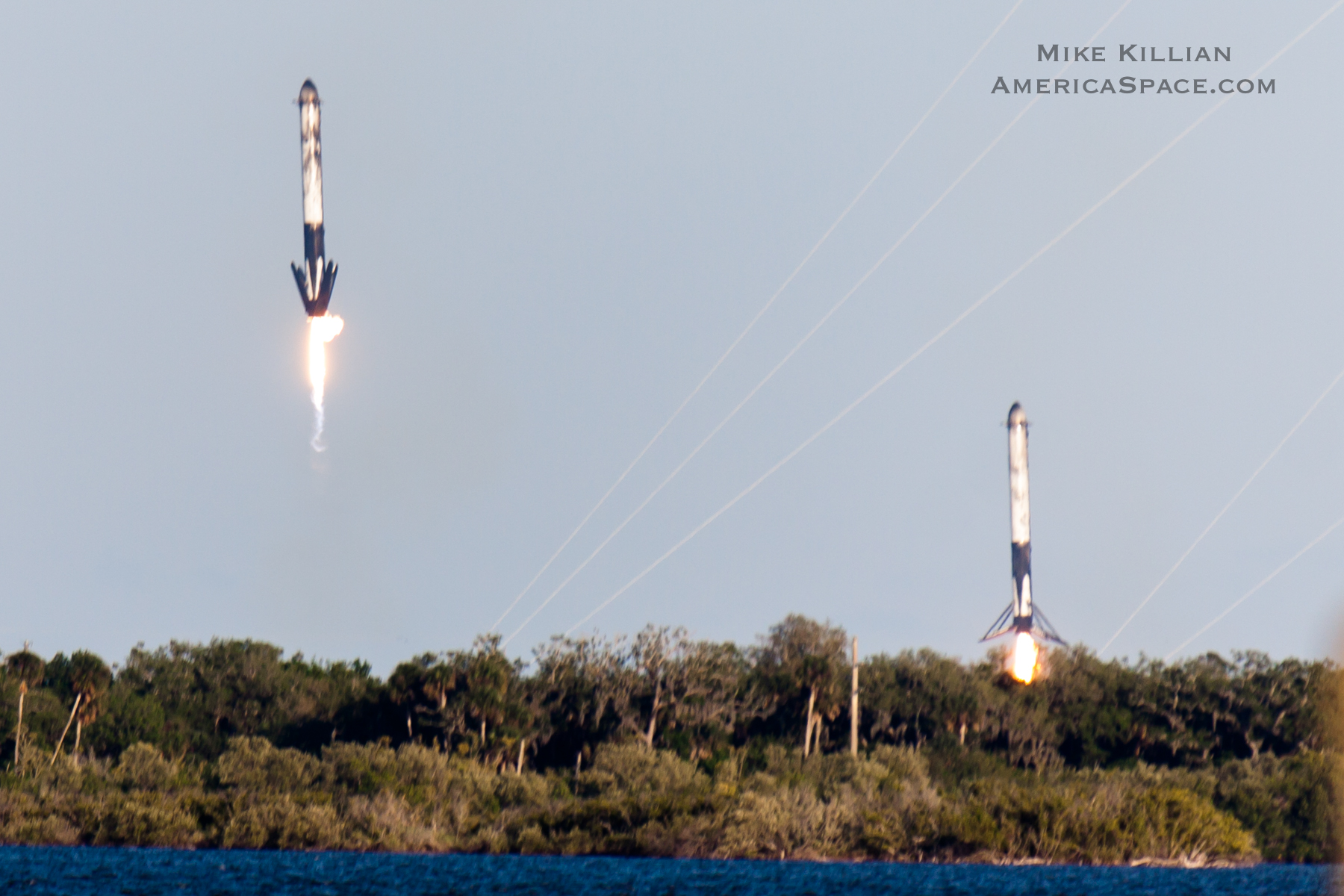
Of those landings, 19 took place on LZ-1 or LZ-2 at the Cape, with three others—in October 2018, June 2019 and following last November’s successful launch of the Sentinel-6A Michael Freilich ocean-monitoring mission—having made landfall on LZ-4 at Vandenberg.
However, one attempt to execute a touchdown on solid ground in December 2018 met with failure when the B1050 core suffered from a stalled grid-fin hydraulic pump during its final descent towards LZ-1. The rocket managed to compensate for the malfunction and kept itself offshore, making a soft-landing in the water and remaining intact as it tipped over, but sustained severe damage to its inter-stage section. It was the first (and so far only) failed landing on solid ground by a SpaceX Falcon 9.
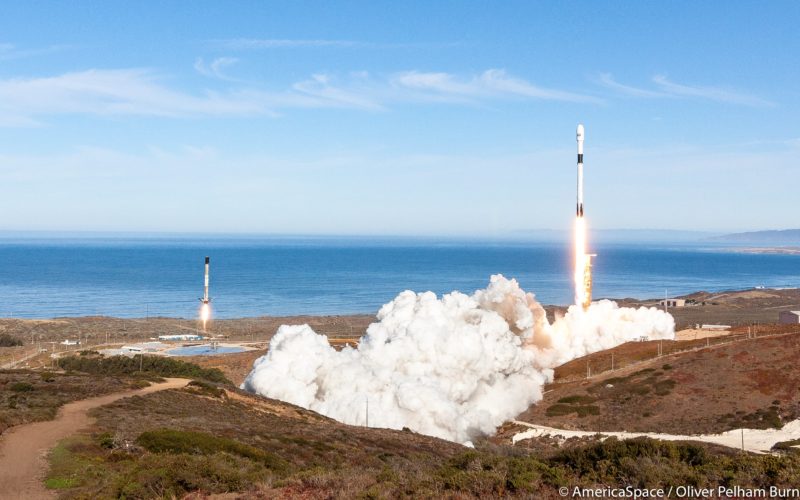
By contrast, there have been 62 attempts since January 2015 to alight softly onto the deck of the ASDS—either “Of Course I Still Love You” or “Just Read the Instructions”—of which all but ten have succeeded. Following four failures between January 2015 and March 2016, another core stage ran out of propellant just before reaching the drone ship in June 2016 and again landed hard.
More recently, in February 2018 and June 2019, during the first and third voyages of the Falcon Heavy, the center cores both failed to make it to the ASDS deck. Two more failures in February and March 2020 marked the first occasions that previously-flown Falcon 9 boosters had ever been lost during landing attempts.
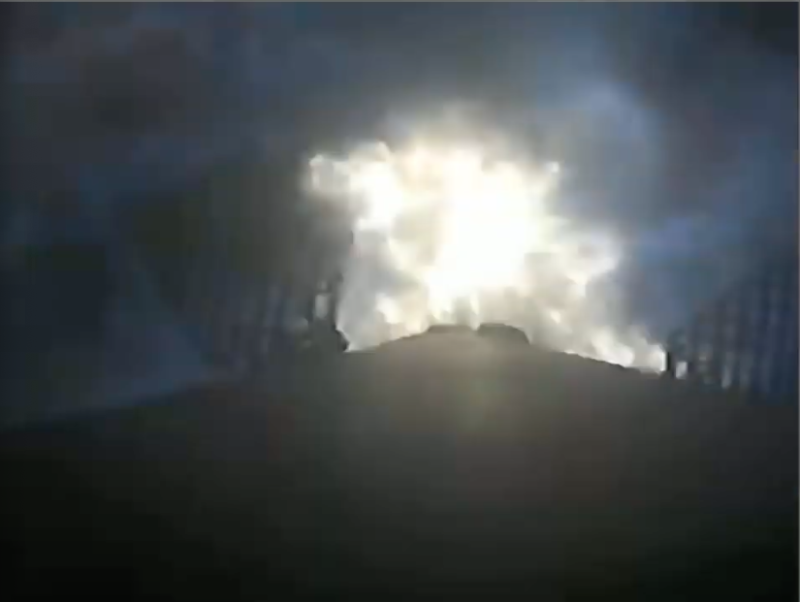
Following the most recent failed landing, an impressive unbroken run of 24 successes—21 drone ship “slam-dunks” and three solid-ground touchdowns—followed, most recently the safe return of reusability turnaround record-holder B1060 earlier this month. The previous record was an unbroken run of 18 successful landings between July 2016 and January 2018.
Monday’s drone ship coverage, which ironically included a remarkably continuous video feed with no interruptions, indicated that the landing “burn” of B1059’s Merlin 1D+ engines got underway as scheduled. A “little bright glow”, according to the SpaceX commentator, was visible just off-screen and a handful of seagulls took flight in terror from the ASDS deck as they were granted a window-seat to B1059’s final death-throes. “It does look like we did not land our booster” came the disappointed update a few seconds later.
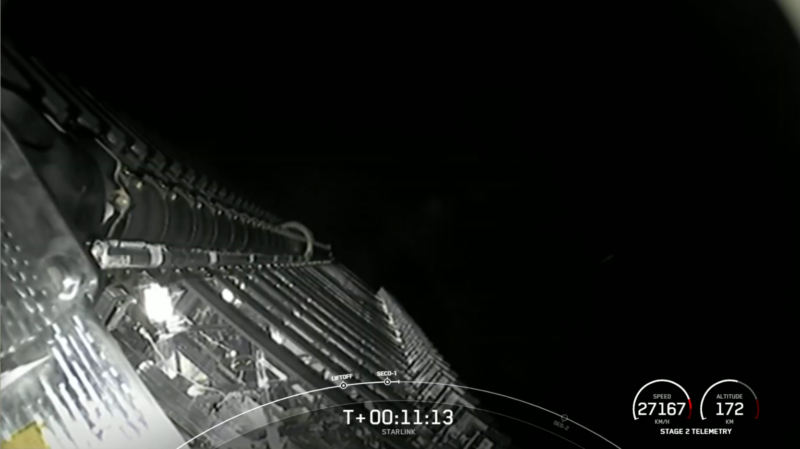
The loss of a frequent-flying member of the SpaceX fleet is certainly unfortunate, with B1059 having pulled a lot of duty over the course of the last year, logging six missions in 14 months. That saw her lift two Dragon cargo ships on the first leg of their respective voyages to the International Space Station (ISS) in December 2019 and March 2020, two Starlink batches—totaling 118 satellites—in June 2020 and on Monday night, Argentina’s SAOCOM-1B Earth-imaging sentinel last August and the highly secretive NROL-108 payload for the National Reconnaissance Office, just before Christmas.
It remains to be seen how many “new” boosters are currently waiting in the wings for their maiden voyages, but SpaceX’s ambitious 2020 manifest of 26 missions was completed using just 11 Falcon 9 cores, three of which have now been lost whilst another was intentionally destroyed in the Crew Dragon In-Flight Abort Test.
That leaves a current active fleet of seven boosters, with fleet leader B1051 having eight flights to her credit, B1049 sitting at second place with seven flights, B1058 and B1060 both neck-and-neck on five flights and newbies B1062, B1063 and B1061 having flown once apiece.
And with B1063 presently assigned to West Coast operations at Vandenberg Air Force Base, that leaves only six active-duty vehicles on the Space Coast.
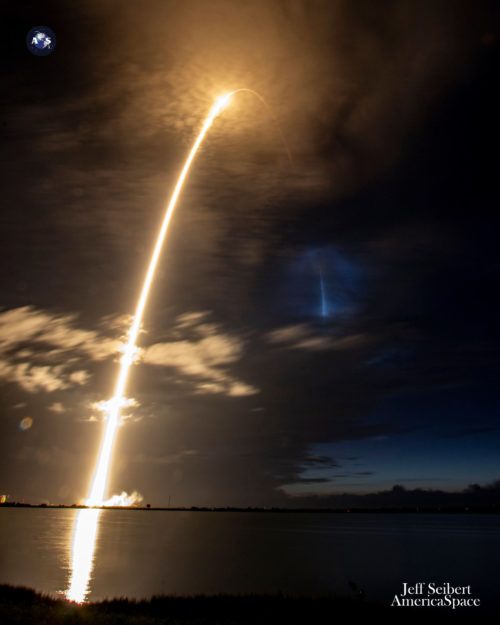
Turnaround times for individual boosters, to be fair, have continued to improve markedly over the last few months. The B1058 core—fresh from launching Demo-2 crewmen Doug Hurley and Bob Behnken aboard Dragon Endeavour last 30 May—broke a 35-year turnaround record for an orbital-class booster, by flying a second mission only 51 days later on 20 July.
This was narrowed yet further in January when frequently-flown B1051 achieved two flights in only 38 days and again, earlier in February, when a Falcon 9 core launched twice within 27 days. Yet even as turnaround turns come down, it remains to be seen if SpaceX’s stated goal of 48 missions in 2021 can be realized.






5 Comments
5 Pings & Trackbacks
Pingback:Rocket Lab Unveils Reusable Neutron Booster, Targets NET 2024 Maiden Launch
Pingback:Rocket Lab Unveils Reusable Neutron Booster, Targets NET 2024 Maiden Launch « AmericaSpace
Pingback:SpaceX Launches Starlink-17, Lands Now 8x-Flown Rocket « AmericaSpace
Pingback:SpaceX, ULA Primed for Five Launches in June, CRS-22 Dragon Set to Fly Thursday « AmericaSpace
Pingback:SpaceX, ULA Primed for Five Launches in June, CRS-22 Dragon Set to Fly Thursday